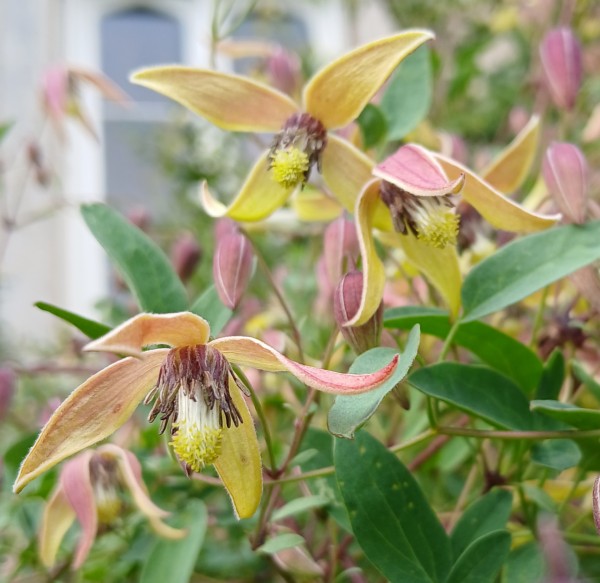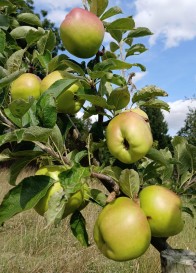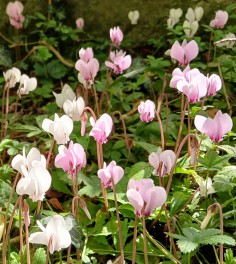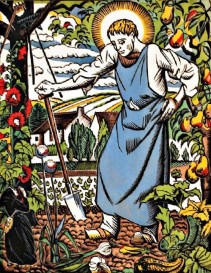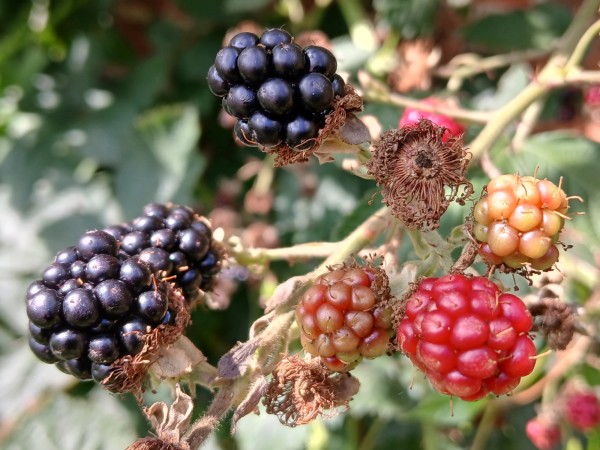Garden Blog - Sep '24
With the arrival of September, gardeners sense a distinct change in the feel of our gardens, as the days get progressively shorter and cooler. Autumn has arrived. As renowned English Romantic poet, John Keats, famously put it, ‘‘visions of mists of mellow fruitfulness’’.
Quite right, too, as the fruit picking season is in full swing, with soft fruit such as blackberries at their peak. Meanwhile, in our Wildflower Orchard, the apples, pears, and quinces, are also coming on nicely. Doing their thing in our formal gardens right now are such autumnal floral favourites as asters, rudbeckias, and ivy-leaved cyclamen.
One of the loveliest late flowering plants in the gardens is Clematis intricata ‘Harry Smith’. Originating from northern China, this clematis has delicately glaucous foliage and is smothered in a great profusion of dainty flowers and silken seedheads. Although it has a reputation of being invasive, spreading by means of suckers, as it clambers through shrubs to reach about six foot high, it’s perfectly well behaved here. This particular form of Clematis intricate was first collected, in 1924, by a Swedish botanist named Karl August Harald Smith, better known as Harry. On an expedition to China where he collected seed from this plant, poor old Harry was set upon by a bunch of reprobates, who took everything he had, except for the seeds. As a result, in Harry’s native Sweden, his introduction became popularly known as ‘the robber’s clematis’, and was named in his honour.
Meanwhile, September is the perfect time to look forward to next year’s display of tender perennials. By taking cuttings of them just now, they will be rooted, potted up, and grown on over winter and spring, to produce vigorous plants that are full of flowering potential for planting out next summer. Ideal candidates include pelargoniums, argyranthemums, salvias, and plectranthus.
Most tender perennial cuttings are nodal, meaning that the cut is made just below a leaf joint, otherwise known as a node, where there is a concentration of hormones to stimulate root production.
-
For best results, collect non-flowering shoots, as they will root more readily.
-
Using a sharp knife, trim below a leaf joint to make a cutting that is roughly 5-10cm in length, remove lower leaves, and dip the cutting base in hormone rooting powder or liquid.
-
Fill a small pot with seed and cutting compost and insert several cuttings around the edge of the pot.
-
Label the pot, and water it gently from above.
-
Place the pot in a closed propagator with bottom heat of 18-24c, or cover with a transparent plastic bag, and place somewhere warm and light.
-
Remove the propagator lid or plastic bag for a short while a couple of times each week for proper ventilation, and to reduce the risk of fungal disease.
-
Ensure the compost remains moist until the cutting are rooted, which will take between two and four weeks.
-
Regularly remove any dead, dying, rotting, or diseased material.
-
Once successfully rooted, the new plants can be separated and potted up into a good multipurpose compost.
-
Also looking forward to next year, don’t forget to buy your spring flowering narcissi, tulips, crocus, and such likes, for planting over the coming weeks.
Last but not least, 1st September is the feast day of Saint Fiacre, the patron saint of gardeners.
This seventh century catholic priest, abbot, hermit, and gardener, was born and raised in Ireland, but travelled to France, where he constructed a hermitage, garden, and oratory, along with a hospice for travellers, on land given to him by Saint Faro. Rather surprisingly, Fiacre set about toppling trees, uprooting briers, cleared weeds, and turned the earth, with nothing more than end of his staff. Rather than believing his extraordinary endeavours were the work of God, a local woman accused Fiacre of witchcraft. Fiacre was exonerated of such malpractice by St. Faro, but in an act of collective punishment, banned all women from his precincts, where he devoted his life to prayer, fasting, keeping vigils, curing folk of their medical maladies, and the cultivation of his garden. Fiacre had a particular reputation for healing haemorrhoids, which became known in the Middle Ages as St. Fiacre’s figs. As a result, Fiacre is also the patron saint of that most uncomfortable condition.
Until next month, happy gardening.

